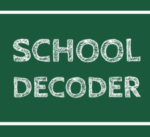Before diving into the merits and drawbacks of elected and appointed school boards–or school committees, as they are often called in New England–I will share some statewide context–and because (despite immediate appearances) School Decoder isn’t all about Rhode Island, future posts will provide national context.
Rhode Island’s 39 municipalities have 36 public school districts, and four regional districts, in which two or more towns join forces to create a district. Yes, I know: mathematically inclined readers are saying, “Hey! That’s 40 districts for 39 towns!” Yes, you’re right. The towns of Foster and Gloucester both have their own school districts and also share a district. I won’t go into the weeds right here to explain how each works; for more information about Foster, Gloucester, and Foster-Gloucester, you can see the full lineup of Rhode Island’s school districts on the Rhode Island Department of Education’s website.
I’ll also note that I am not going to discuss the boards that govern our state’s charter schools, nor the five boards that govern Rhode Island’s state schools or collaboratives.
Among Rhode Island’s 40 school districts, most have elected local boards, though a few have a hybrid model that accommodates both elected and appointed members. The Providence Public Schools are mayorally controlled (watch for a post to come that delves into mayoral control of school systems). Providence’s school board members are nominated by a commission and appointed by the Mayor of Providence with City Council approval. Central Falls’ public schools are overseen by the state; Central Falls’ school board members are selected by the state commissioner and appointed by the head of the board of regents (more info about Central Falls’ board of trustees appointment process here).
From this perspective, the impact of appointed boards seem insignificant, as only a small percentage of our state’s municipalities have them. But this sense of impact changes when looked at in terms of population. According to InfoWorks, 142,014 students attend Rhode Island’s public schools (district schools that are neither charters nor statewide/collaboratives). 23,983 students are in the Providence Public Schools. 2,589 students attend public school in Central Falls. This means that almost 19 percent of our state’s students are in school systems with appointed boards–and these are, for the most part, students who are most likely to be impacted by poverty, immigration status, and other challenges. So, it’s well worth a look.
